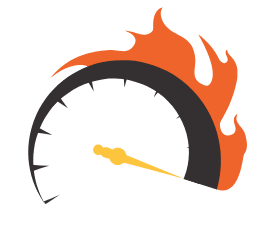
Data visualization, a tool utilized by large scale companies such as Nike and Amazon, is emerging as a critical asset that has the power to transform the way data is accessed, presented, and used.
Although big player companies have been attracting the data visualization limelight, according to market reports by PR Newswire, small and medium-sized enterprises are now fueling the adoption of data visualization.
The reason for this is that, through its benefits, data visualization holds the potential to solve several pivotal business issues.
With the rise of big data, the importance of data visualization is growing at a compounding rate. To remain competitive in the future, businesses of all scales will likely need to incorporate the use of data visualization methods.
By taking advantage of data visualization, organizations stand to reap many transformative benefits, some of which could constitute a quantum leap in critical areas of operations.
Let’s uncover and discover why data visualization is becoming such a crucial area together.

1. It’s the Key to Unlocking Big Data
With the advent of big data, more and more companies are collecting and storing vast amounts of data. The problem comes in analyzing this data.
From 2015 to 2017, the adoption of big data in enterprises accelerated from 17 percent to 59 percent. These statistics have left many companies with vast amounts of data at their fingertips. On the other hand, many companies are unable to make full use of their data thanks to cumbersome dashboards and retrieval methods.
Once data is retrieved, it’s compiled and analyzed in reports that require hours of fine combing from leaders and decision-makers.
Data visualization can solve these inefficiencies. Visualization allows people to grasp vast amounts of data presented through particular formats instantaneously. As big data is becoming one of the most valuable resources for businesses to tap into, these capabilities of data visualization are becoming more and more essential.

2. Visualization Allows for near Instant Absorption of High Amounts of Data
One of the most significant advantages of data visualization is that it allows us to absorb large amounts of data at the literal glimpse of an eye.
Why would this be? Well, it is in part because humans can process visual images 60,000 times faster than text.
One of the reasons for this is that the neural process for visualization requires more work from the brain than that of the processing seen images. Therefore, seeing a graph, chart, or other visual representation of data is more comfortable for the brain to process, than for it to read and comprehend text, and then convert this into a mental visualization (that likely will not be entirely accurate) of the data. Seeing as each experience we have with a book will be different based upon the individual who falls into a story.
Coupled with these two conditions is the fact that roughly 90 percent of information sent to the brain is visual.
Taken together, this means that we can digest visuals the speed of light and grasp the relationship between multiple points of data when doing so.
As an illustration, which is easier to take up, a pie chart, or a written out description of what it is portraying? Traditional data visualization techniques, such as bar graphs and pie charts, can already turn difficult-to-visualize data into something that is instantly understood, just like MasterCard’s logo.
With the current and more evolved data visualization capabilities, users can also bring up more advanced visualizations. For example, an easy way to visualize some random data is to configure it into a bubble graph or a heat map. For more sophisticated analysis, you can choose to bring up displays such as frame diagrams (for hierarchical presentations) or Gantt charts (for project management type applications).

3. Data Visualization Speeds up the Decision Making Process
Because of our ability to rapidly comprehend data that is in a visual form, data visualization can materially increase the speed of decision-making processes.
According to the Wharton School of Business, data visualization can shorten business meetings by up to 24 percent.
Faster decision-making is highly valuable to enterprises, and slowed decision-making can often be responsible for inefficiencies and even direct losses. With the ability to make quicker decisions, companies can take timeous action on trends, consistently outstrip competitors, avert losses, and capitalize on unexpected market conditions.

4. It Can Reveal Patterns and Trends
Data visualization is also a highly useful tool for identifying patterns and trends. Being aware of patterns and trends is crucial for the survival of organizations, and the internal trends that can be revealed by data visualization can spell the difference between increased losses, or maximized gains.
Without trend and pattern data, organizations operate metaphorically in the dark, making decisions based on assumptions rather than hard facts. In contrast, the use of data visualization, patterns, and trends that have been hiding in the shadows of untapped data, can be brought to the light of day and acted upon.

5. Data Visualization Quickly Shows Relationships Between Operations and Results
One of the reasons why data visualization is essential to almost any organization is that it can easily show relationships between operations and results.
With the use of data visualization, managers and decision-makers can quickly draw up and instantly digest critical metrics. And if there are anomalies in any of these metrics—ie. sales are noticeably down in one region—decision-makers can rapidly drill down into the data to reveal what operational conditions or decisions are at play and how these correlate to the encountered metrics.
This allows for fast analysis and action to be taken on issues, thanks to the fact that the data is so accessible and easily digestible.

6. It’s Interactive and Can Go Deeper Than Traditionally Graphs and Charts
One of the most transformative aspects of data visualization is that unlike traditional data visualization methods (spreadsheets, powerpoint, etc.) it allows the user to delve deeper and transform data into many different types of visualizations.
These functions are also more intuitive than traditional methods, and users can quickly manipulate data into desired configurations.

7. With Visualization, Companies Are More Likely to Access Data
According to information gathered from an Aberdeen report, organizations that utilize data visualization are 28 percent more likely to be able to access timely information than others.
Having access to real-time information can give businesses an advantage over competitors and can significantly assist management functions.
According to further research by Aberdeen, 65 percent of business managers face a ‘shrinking decision window.’ The timeframe in which managers have to reach decisions is becoming shorter; however, in many organizations, managers do not have access to real-time, on-demand data.
Yet another reason why data visualization can be of great benefit in data-driven decision making.

8. Data Visualization Enhances Communication
Data visualization is a fast, usefu-zl communication tool that can bring employees, decision-makers, and other parties together on information and data in a much faster and sure way than previous methods such as reports and spreadsheets.
Clear and effective communication is proved to be highly relevant to companies as it can measurably improve productivity and increase the effectiveness of operations.
Additionally, clear communication with employees can enhance levels of job satisfaction and motivation, lowering levels of absenteeism, and employee turnover rates. For this reason, when leveraging data visualization, it can be of benefit to share regular and relevant data insights with not only decision-makers but employees as well.

9. It Also Saves on Measurable Amounts of Employee Time
As per the above-mentioned research conducted by Aberdeen, in the absence of data visualization, it is not uncommon for employees to spend material amounts of time modifying dashboards, tailoring reports, and responding to ad hoc data retrieval requests.
This inefficiency is a result of cumbersome retrieval systems and the fact that most of these systems can only be operated by employees trained specifically in that area.
New data visualization technology, on the other hand, cuts down on these issues. Data can be retrieved almost instantaneously and with little effort, and employee time can be optimized by more efficient use.
What’s more, Aberdeen’s research also revealed that when using data visualization, 48 percent of managers are able to find that data they require without having to consult an IT staff member.

The Importance of Data Visualization Is Growing
With the ever-increasing role that big data is playing in business decisions, the importance of data visualization is growing exponentially.
With data visualization, organizations can tap into the true potential of their data, and they can do this quickly, efficiently, and effectively. In turn, this can lead to enhanced quality and speed of decision-making processes, as well as measurable increases in productivity and efficiency.
Your organization is yet to harness the transformative power of data visualization. Browse our services or contact us for more information.
